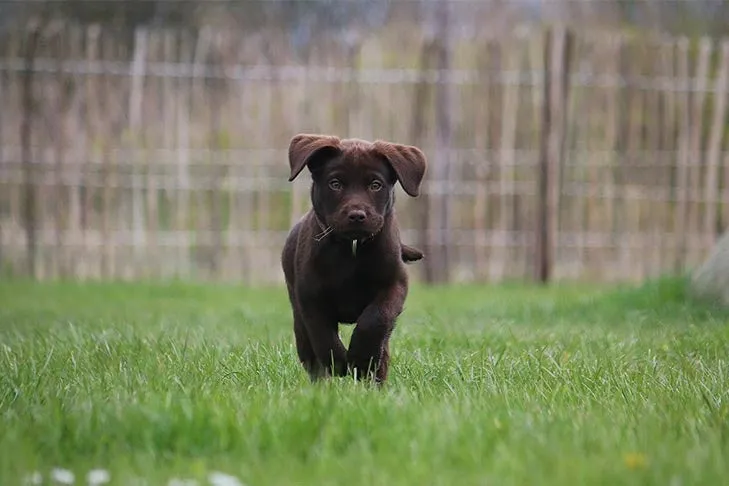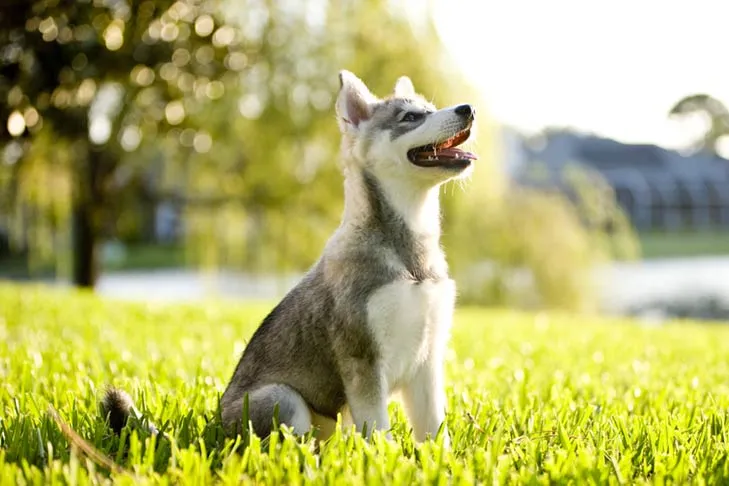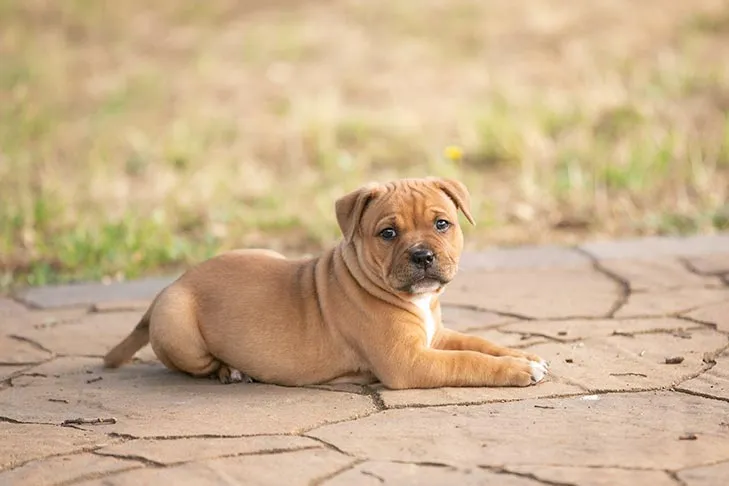Training your dog is one of the most rewarding experiences you can share, laying a strong foundation for a happy and well-behaved companion for years to come. While the journey might seem daunting, focusing on a few key commands can significantly enhance communication and strengthen your bond. These dog tricks to train your dog not only provide mental stimulation for your pup but also ensure their safety and make daily interactions more enjoyable. This guide will walk you through five fundamental tricks that are crucial for any dog owner, making the process simple and effective.
Setting the Stage for Successful Dog Training
Effective dog training hinges on understanding your puppy’s needs and fostering a positive learning environment. When you first bring your puppy home, usually around 8 weeks old, they are ready to begin very simple training. Knowing what you expect makes puppies feel secure in their ability to meet the goals laid out going forward, ensuring a confident and responsive learner.
The bedrock of successful training is positive reinforcement, a method where you reward desired behaviors to encourage their repetition. This isn’t about bribing your dog; it’s about using something your dog values to communicate what you want them to do. High-value food treats, enthusiastic praise, or even a favorite toy can serve as powerful motivators. It’s essential to avoid punishment like yelling or leash corrections, as these can confuse your dog and erode trust. Remember, patience is paramount; we can’t expect dogs to know what they haven’t been taught. Keep training sessions brief, ideally 5 to 10 minutes, and always conclude on a positive note. If your puppy is struggling, revert to a command they know well, reward them handsomely, and end the session there, preventing frustration and boredom.
 A happy Labrador puppy runs through lush green grass towards a fence.
A happy Labrador puppy runs through lush green grass towards a fence.
How to Teach Your Dog to Come When Called
Teaching your dog a reliable recall – coming when called – is perhaps one of the most critical commands for their safety. Begin this essential trick to train your dog in a quiet, indoor area with minimal distractions.
- Start by sitting with your puppy and clearly saying their name followed by “come.”
- Each time you say the cue, immediately give your puppy a treat. At this stage, no action is required from them; you’re simply associating the word with a positive reward.
- Next, drop a treat on the floor near you. As soon as your puppy finishes it, say their name again. When they look up at you, reward them with another treat.
- Repeat this several times, gradually increasing the distance you toss the treat. The goal is for them to turn and face you upon hearing their name. If they don’t respond, avoid repeating their name repeatedly. Instead, move closer and return to a step where they can succeed.
- Once your puppy consistently turns to face you, add movement! Toss a treat, take a few quick steps away, and call their name. Most puppies will happily chase after you.
- When they catch up, shower them with praise, treats, or a quick game with a tug toy. Coming to you should always be a joyous and fun experience. Gradually increase distances and introduce new, safe, enclosed environments for practice. A long leash can be helpful when training outdoors.
Always avoid grabbing your puppy when they arrive. If your dog is timid, kneel, face them sideways, and offer treats as you gently reach for their collar.
How to Teach Your Dog Loose-Leash Walking
Polite leash walking is a game-changer for daily strolls, making walks enjoyable for both you and your dog. While competitive obedience might focus on a strict “heel,” the goal for puppies is to simply walk politely on a loose leash without pulling. You can choose any cue, such as “let’s go” or “forward,” but consistency is key.
- First, ensure your puppy is comfortable wearing a leash. Many puppies find this strange initially and might try to bite it. Offer treats each time you put the leash on to create a positive association.
- Stand next to your puppy with a loose leash. Reward them with several treats in a row for simply standing or sitting calmly by your leg.
- Take one step forward and encourage them to follow, immediately giving a treat as they catch up to your side.
- Continue walking, providing treats at the level of your knee or hip as they stay in position.
- If your puppy rushes ahead, calmly change direction. Call them back to you, reward them in place, and then continue walking. Gradually increase the interval between treats (e.g., every step, then every other step).
- Eventually, your dog will learn to walk happily at your side. Remember to allow ample time for sniffing during your walks. After their “sniffing time,” use your chosen cue like “Let’s go!” in an upbeat voice, rewarding them for returning to position and walking with you.
 A small Alaskan Klee Kai puppy sits attentively in a field of green grass.
A small Alaskan Klee Kai puppy sits attentively in a field of green grass.
How to Teach Your Dog to Sit
The “sit” command is a foundational behavior and one of the best tricks to teach your dog for basic control and manners. There are two primary methods: capturing and luring.
Capturing Method:
- Stand in front of your puppy with treats ready.
- Patiently wait for your puppy to sit naturally. The moment their bottom touches the ground, say “yes” (or use a clicker) and give them a treat.
- Encourage them to stand again by stepping backward or sideways.
- Wait for them to sit once more and immediately reward.
- After a few repetitions, you can begin to say “sit” just as they are about to sit, linking the verbal cue to the action.
Luring Method:
- Get down to your puppy’s level, holding a treat as a lure.
- Place the treat directly in front of their nose, then slowly lift it in an arc over their head. As their nose follows the treat upwards, their bottom will naturally lower into a sit.
- Allow them to eat the treat the moment their bottom touches the ground.
- Repeat with the food lure a couple of times. Then, transition to using an empty hand signal, still rewarding them after they sit.
- Once they consistently follow your hand signal, start saying “sit” right before you give the signal.
Never physically push your puppy into a sitting position, as this can be confusing and stressful for them.
How to Teach Your Dog to Lie Down
The “down” command is incredibly useful for calming your dog and can be taught in a similar manner to “sit.” This is another of the fun tricks to do with your dog that fosters self-control.
Capturing Method:
- Find a quiet, small room (like a bathroom) where your dog is likely to lie down naturally.
- Wait for your dog to lie down on their own. The instant they do, reinforce the behavior with a treat.
- Give them a release cue (e.g., “OK” or “free”) to encourage them to stand up, using a lure if necessary. Then, wait for them to lie down again.
- Once they are quickly lying down after standing, begin saying “down” just before they perform the action.
Luring Method:
- Hold a treat at your dog’s nose level.
- Slowly bring the treat down to the floor and then slide it away from their nose, towards their chest. Your dog will follow the treat, lowering into a down position.
- Give the treat when their elbows touch the floor initially.
- After a few practice runs, switch to using an empty hand signal, rewarding them after they lie down.
- When they reliably follow your hand signal, start saying “down” as you move your hand.
As with sitting, avoid forcing your dog into a down position; positive reinforcement yields better, more lasting results.
 A Staffordshire Bull Terrier puppy peacefully lays on the ground outdoors, looking content.
A Staffordshire Bull Terrier puppy peacefully lays on the ground outdoors, looking content.
How to Teach Your Dog to Stay
The “stay” cue teaches your dog to remain in a specific position (like sit or down) until you release them. This is a duration-based behavior, meaning the goal is to gradually increase the time and distance your dog can hold the position.
- First, teach a clear release word, such as “OK” or “free.”
- With your puppy in a sit or stand, toss a treat on the floor and say your release word as they step forward to get it.
- Repeat this a few times until you can say the word first, and then toss the treat after they start to move, teaching them that the release cue means “move your feet.”
- Once your dog understands the release cue and can sit on command, place them in a sit, face them, and give them a treat.
- Pause for a moment, then give another treat for staying in the sit, and finally, release them with your chosen word.
- Gradually increase the time you wait between treats. If your dog gets up before the release cue, it simply means you’ve progressed too quickly. Make it easier by returning to a shorter duration.
- After your dog can stay for several seconds, begin adding distance. Place them in a sit, say “stay,” take one step back, then step back to your puppy to give a treat and your release word.
- Continue building distance incrementally, ensuring your dog remains successful. Practice facing them and walking away with your back turned for more realistic scenarios.
The key to all these commands is incremental progress and consistency. Don’t expect too much too soon. By keeping training sessions short, positive, and successful, you’ll establish a strong bond and a well-behaved companion for life.
